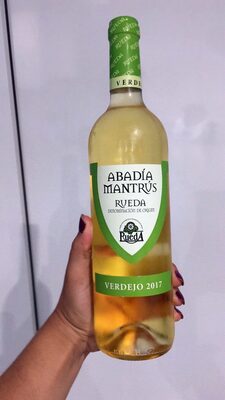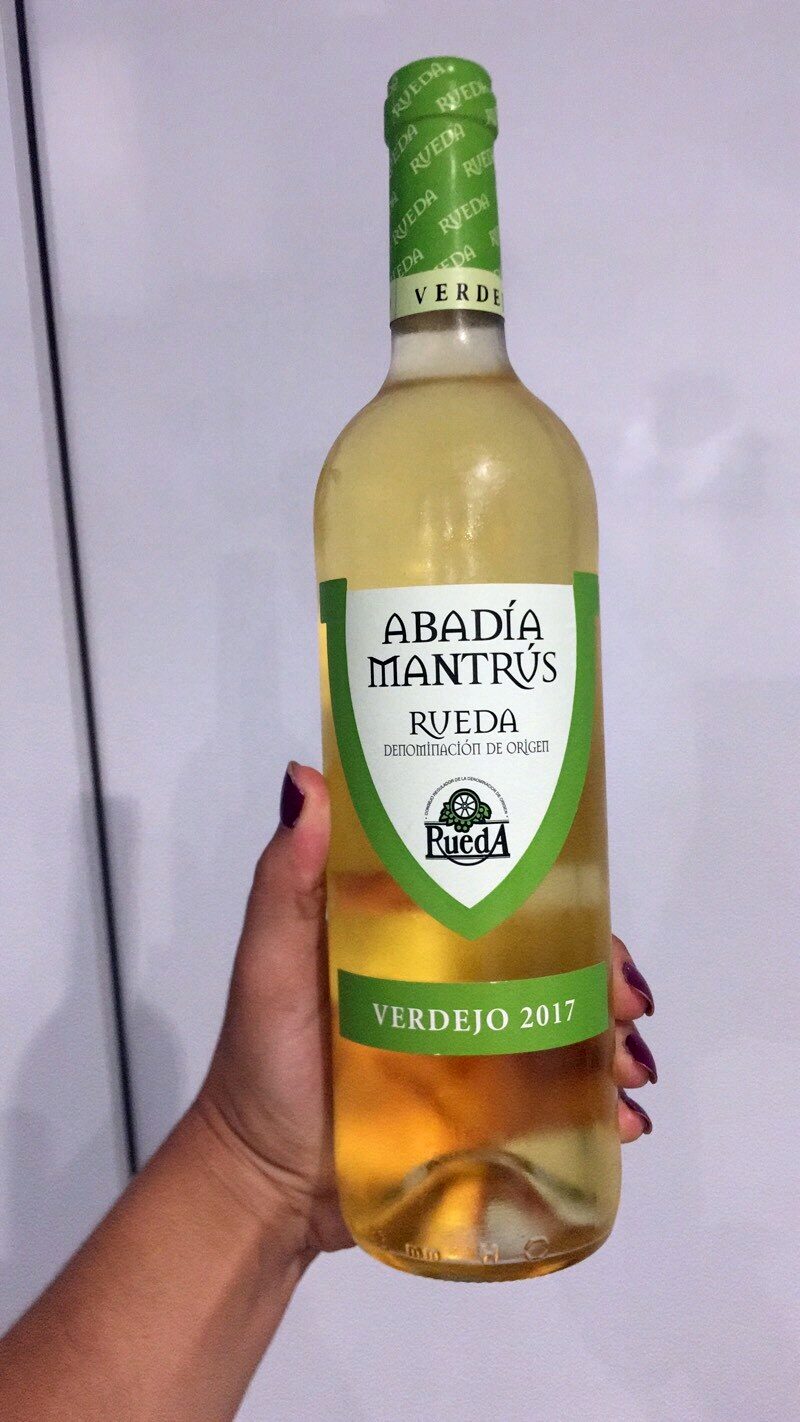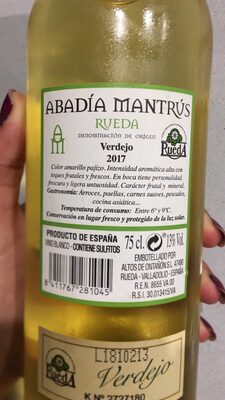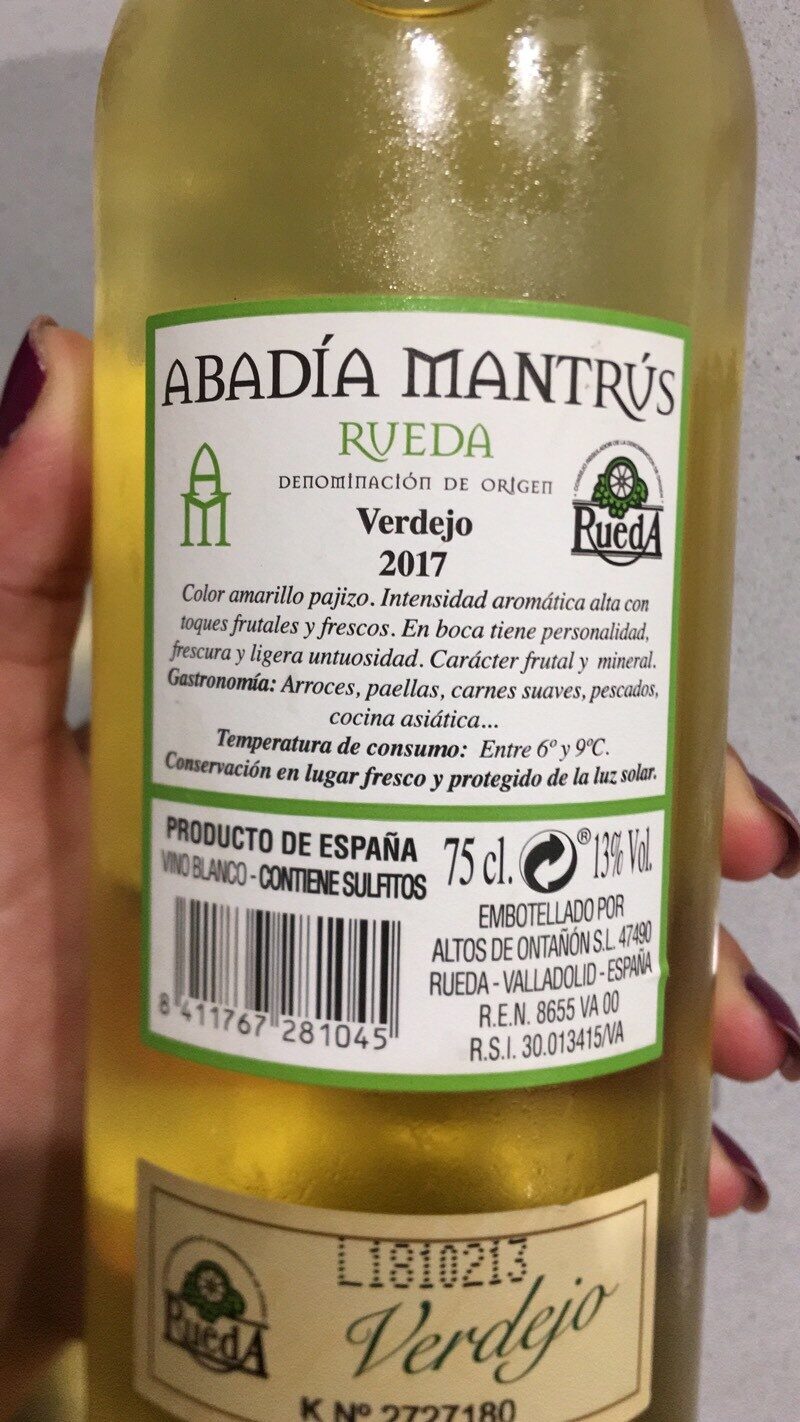Rueda verdejo - Abadía Mantrús - 750 ml
This product page is not complete. You can help to complete it by editing it and adding more data from the photos we have, or by taking more photos using the app for Android or iPhone/iPad. Thank you!
×
Barra-kodea: 8411767281045 (EAN / EAN-13)
Izen arrunta: Vino blanco verdejo
Kopurua: 750 ml
Ontziratzea:
en:Green dot
Markak: Abadía Mantrús
Kategoriak: en:Bebidas, en:Bebidas alcohólicas, en:Vinos, en:Vinos blancos
Etiketak, ziurtagiriak, sariak:
en:Vegetarian, en:Not advised for specific people, en:Vegan, en:With sulfites, en:Contains alcohol, en:European Vegetarian Union, en:European Vegetarian Union Vegan, en:Green Dot, en:Made in Spain, en:Not advised for pregnant women



Dendak: Mercadona
Saltzen diren herrialdeak: Espainia
Matching with your preferences
Ingurumena
Ontziratzea
Transportation
Report a problem
Datuen iturria
Product added on by elcoco
Last edit of product page on by grumpf.
Produktuaren orria -gatik editatua alia, elcoco.99141d9b5552644c60af29b6051594a8, kiliweb, musarana, yuka.ZllvOVRaZ1l0UDg2cGNCanhVbi9vKzk2M0xYelkyV2RPdlEzSVE9PQ.






